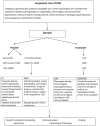A Clinical Approach to Diagnosis of Ambiguous Genitalia
- PMID: 31258263
- PMCID: PMC6568146
- DOI: 10.4103/jiaps.JIAPS_70_18
A Clinical Approach to Diagnosis of Ambiguous Genitalia
Abstract
Disorders of sex development (DSD) are a sensitive and stressful condition for the family as well as the treating physician to deal with. The main issue in managing such cases is sex assignment. The decision is influenced by the cultural background, the sex of rearing, clinical features, the biochemical parameters including hormonal studies, the imaging reports, parental preference, fertility potential, and the assessment of mental make-up of the child when possible. In third world countries, there is diagnostic dilemma as most children with DSD present late and a detailed-lengthy work-up often delay their definitive treatment. In this article, the authors try to identify the important clinical features in children presenting with various types of DSD, which may aid in making a quick provisional clinical diagnosis and expediting the diagnostic work-up. The data have been gathered from 38 years of experience of the senior author while managing about 1200 cases of DSD in the pediatric intersex clinic at the tertiary care level institute.
Keywords: Clinical features; differences in sex development; discordant; disorders of sex development; genital ambiguity; intersex; sex differentiation.
Conflict of interest statement
There are no conflicts of interest.
Figures




References
-
- Lee PA, Houk CP, Ahmed SF, Hughes IA. International Consensus Conference on Intersex Organized by the Lawson Wilkins Pediatric Endocrine Society and the European Society for Paediatric Endocrinology. Consensus statement on management of intersex disorders. International Consensus Conference on Intersex. Pediatrics. 2006;118:e488–500. - PubMed
-
- Lee PA, Nordenström A, Houk CP, Ahmed SF, Auchus R, Baratz A, et al. Global disorders of sex development update since 2006: Perceptions, approach and care. Horm Res Paediatr. 2016;85:158–80. - PubMed
-
- Aaronson IA, Aaronson AJ. How should we classify intersex disorders? J Pediatr Urol. 2010;6:443–6. - PubMed
-
- Houk CP, Hughes IA, Ahmed SF, Lee PA. Writing Committee for the International Intersex Consensus Conference Participants. Summary of consensus statement on intersex disorders and their management. International Intersex Consensus Conference. Pediatrics. 2006;118:753–7. - PubMed

